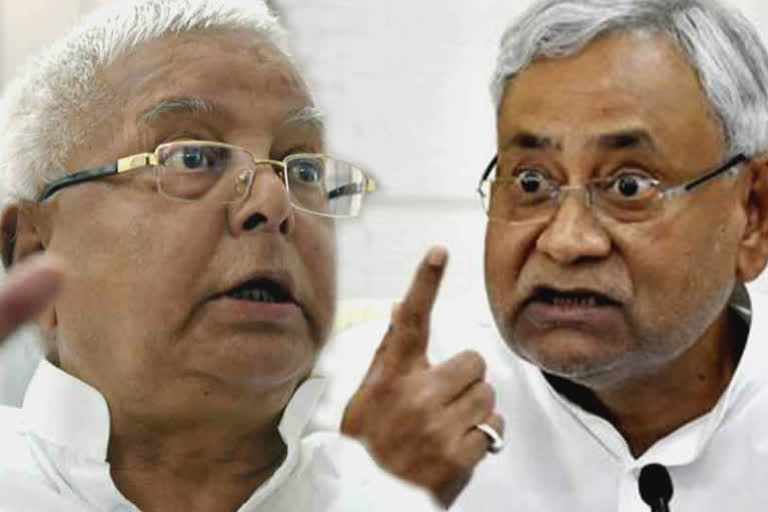Patna: Caste equation has always been an important and driving force in Bihar election for all the political parties. One caste which plays a dominant role in Bihar politics is the upper caste mainly Brahmin, Rajput and Bhumihar apart from the smaller subgroups in upper-caste which constitute around 15 per cent of total vote share.
Looking at the track record of the upper caste voting trend in Bihar, they have always supported BJP and its allies. The kind of social engineering Bihar has gone through, it has been found that in every political party a group of a particular caste has been created. Despite being less in numbers, the upper castes still hold substantial influence in Bihar politics.
Be it Dalit Morcha or Savarna Morcha, in every political party, a quota is fixed and accordingly, representation is given. That's the reason that the leader of every regional party keeps an influential upper caste leader beside them to send across messages among the people. Be it Sanjay Jha of JDU, Jagdanand Singh and Shivanand Tiwari of RJD or Mangal Pandey of BJP. Upper caste segment is visible in all the political parties.
But BJP has always ensured to consolidate their vote in their favour by raising the issues related to the upper caste community.
The Bihar assembly has 243 members out of which 40 are reserved seats – 38 for SC and 2 for Sts. Looking at the figure, it has 53 lawmakers from the upper caste community at present.
It is very important to look at the past which led to a paradigm shift in the voting pattern of the upper caste. When Janata Party tried to woo the Other Backward Class (OBC) through Mandal commission in late 90's similarly BJP tried to consolidate the upper caste through Kamandal (read Ram Janm Bhoomi). Till today, the BJP has a stronghold on the upper caste.
Ever since Congress started to support Lalu Prasad in 2000, the upper castes shifted their loyalty to BJP. Previously, they had been core supporters of the Congress.
ALSO READ: Mahagatbandhan is the need of the hour: Binoy Viswam
The upper caste in Bihar is virtually at war ever since Lalu Prasad became the chief minister in the 90's. The tension between upper caste and RJD grew further when Lalu infamously gave a call for Bhu-Ra-Ba-L saf karo. A perception among the upper caste was created that Lalu was trying to sideline Bhumihar, Rajput, Bhraman and Lala (Kyasth). Several times, Lalu had denied saying such things in public meetings but the message spread like a forest fire.
Later, the series of mascara between moist led by Dalit group and Ranvir Sena (A bhumihar group milatia founded by late Brahmeshwar Mukhiya) escalated the tension between the two. In March 1999 at Senari village in Jehanabad district, 34 Bhumihars were killed by MCC (Moiasts Communist Centre). The Bhumihars of Bihar still co-relate the incident to target RJD because Lalu never visited the mascare spots where upper caste was killed.
The political observer opined that going with the present scenario, it is a fact that upper caste will vote for the BJP candidate but not for the JDU candidate even though it would be the candidature of the NDA.
Upper caste is also responsible for creating a perception among the voters having their influence at large in decision making.
Being the leader of NDA, even Nitish Kumar in 2011 had formed an upper caste commission to improve the economic status of the poor among upper castes. However, the government later dissolved the panel. In 2013 when a split took place between JDU and BJP, the upper caste vote remained intact with BJP only.
Off late, RJD is also trying to create this perception that the party is friendly with the upper caste. This may be the reason that RJD in past few years offered top post and representation to the leader of upper caste. The RJD now wants to win the hearts of upper caste people and come out from the MY (Muslim-Yadav) factor.
To woo the upper caste RJD helped Congress candidate Akhilesh Singh, a Bhumihar candidate to win Rajya Sabha and also sent another leader from the same caste Amrendra Dhari Singh to Upper House.
But, the way RJD opposed the NDA government to move to grant 10 per cent reservation to the economically backward upper caste, it is hard for RJD to gain their trust.
It is also difficult for the Congress to make inroads amongst the upper caste as BJP has maintained the momentum till date.
The upper caste ruled the state in the form of Congress from Independence to till 90's except for a few intervals between 1967 to 1972. In this period non-upper caste CM was there which includes Daroga Rai Prasad, Bindeshwari Prasad Mandal and Bhola Paswan Shastri.
The importance of upper castes in Bihar has gone high after it's claimants has increased manifold in the form of different political parties including the present one in the state.
ALSO READ: RLSP and VIP will be given respectable seats in grand alliance: Ajay Kapoor



